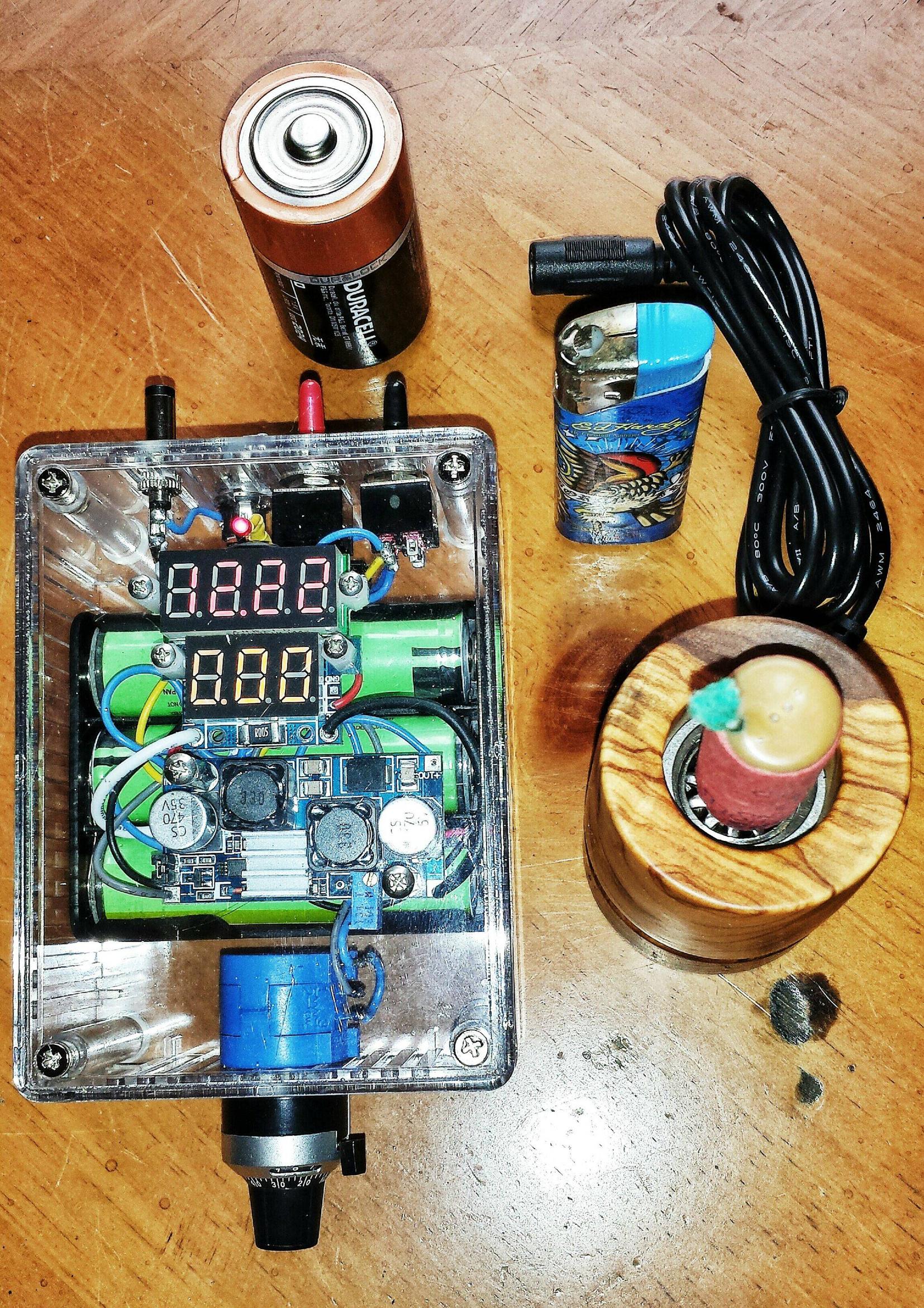I honestly do not understand how the grasshopper works very well. It requires an oscilloscope to check the rear end of the hopper, I hear?
Somehow this pwm may trick the battery into flowing more peak amps than the battery can output? Just a theory I have heard..
I gave up on following GH a while back (until they 'got their act together'....) but the idea is simple enough and common.
There are two common ways to provide variable power, proportional or duty cycle control. You car's Cruse Control is an example of the first, the engine power is controlled over a linear range to suit the needs (more power if the car goes too slow, cut back down the hill) Always 'part on'.
Duty cycle, OTOH, is like your home heater or vapes like Solo. Here it's full on or shut off (never partially on) and over time the average is what counts. If it draws 3 Amps half the time it's using 1.5 Amps on average. Cutting it back to 1/3 drops the current (and therefore power) to 1/3 of maximum. And so on. You can shift slowly (like the home heater) or fast (like a light dimmer which does this 120 times a second). As long as you're faster than the time constant of the system it all averages out.
Since heat build up (the enemy of wire) is slow relative to the rate average counts there. If, however, that wire is too long the total loss heating the wire can become high enough to lower the available voltage to the load (this is why you need fat extension cords for long runs, to limit the drop not protect the cord).
PWM is the subset of that where the unit shuts on and off at a fixed rate (that changes with demand changes) with the percentage of on time (as part of the total) setting the output. PPM, other hand, stays on for a standard time but varies the time until the next on cycle (like your home heater does).
https://en.wikipedia.org/wiki/Duty_cycle
Normally you'd size the heater so full on is enough power to get to temperature in a reasonable time (as is done is Solo and similar designs. Keeping the peak power demands as low as possible. Sales types, OTOH want fast times and sometimes override common sense and sound design. I would not be at all surprised if that was in full bloom at GH, given their past WILD claims most anything is possible?
The meter is simply a resistor you put in series and measure the voltage drop across caused by the current. By Ohm's Law. Since the typical 'basic meter' is 200mV full scale, this means the ten Amp (normal full scale) reading represents 100mV detected. .1 Volt divided by 10 Amps says that resistor is 1/100 of an Ohm? The leads are probably more. Looked at the other way, the meter loss causes the available voltage to drop an additional less than .1 Volt. Using a slightly more charged battery more than makes up for it?
Yes, to monitor the changes in the pulse widths you'll need a 'scope. You can get into that game cheap enough (well under $100) but you really need to know what you're looking for (and how to deal with it) before you hook one up.
OF





